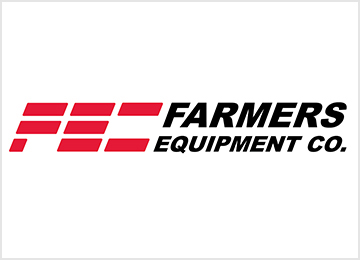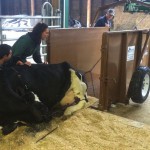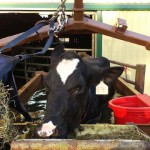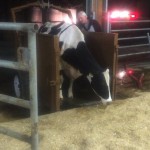By Cate Pedersen
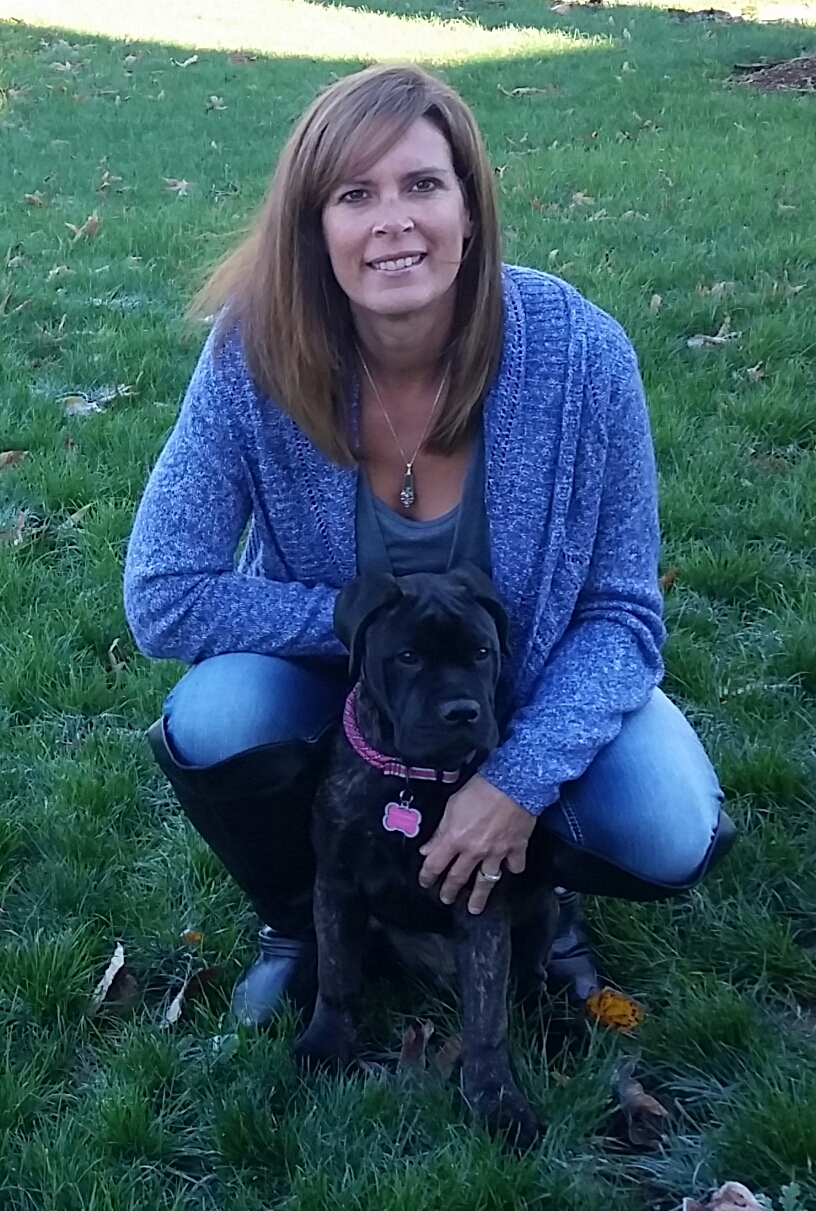
Dr. Lisa McCrea, bovine specialist and partner at Agwest Veterinary Group Ltd. in Abbotsford, BC, spends most days traveling to the farms she services throughout the Lower Mainland. Agwest’s three dairy experts cover Delta to Chilliwack, as well as farms in Mission and Maple Ridge.
McCrea might make between six and eight calls a day, and examine 80 to 100 cows during a herd health call. Her duties range from ultrasounding pregnant cows, discussing mastitis issues, monitoring calf health, and tending to a variety of dairy cow ailments including downed cows—those who cannot stand up on their own and need special rehabilitation to be saved.
A cow can falter around freshening time, especially if she’s had a difficult calving, and might have nerve paralysis in her hind quarters. She may suffer with milk fever or low calcium levels which affect her muscles and she needs time to recuperate. In addition to calcium treatment, the cow may need to recover from compression injuries due to lying too long.
“There are weeks when you’ll see three or four downed cows,” McCrea says. “I knew that the cows needed to exercise their muscles and they may have recovered if we’d used a floatation tank, so I started looking into where we can purchase one and how we can make it work.”
McCrea explains that float tanks have been used for cows since the 1970s. The Aqua Cow Rise System was developed and patented in Denmark by a dairy farmer who went through physio- and hydro-therapy after an injury. When he returned to his dairy, he wondered whether they could use the treatment for downed cows.
“Tanks are used in some universities in Canada and the States and there are a few companies whose business it is to float cows,” adds McCrea.
In 2013, Agwest purchased an Aqua Cow Rise System from California—the only portable bovine water therapy system in BC—to treat the distressed animals in a more natural, gentle way.
“I often wondered why a group of farmers didn’t get together to buy a tank,” McCrea muses. “It’s one of those pieces of equipment you may only need once a year, but when you really need it, you want it—so if it’s shared, it wouldn’t sit idle.”
The system requires a water source, a way to heat the water, and a pump.
“What we’ve done is put everything that needs to go along with it on the back of an 18 foot trailer. It’s at one of our client’s farms, and when a farmer needs it, he can go and pick up the trailer,” she explains. She studied YouTube videos and the brochure that came with the equipment to learn how to use it.
“It’s certainly not a money-making service for us,” says McCrea. “We tried to keep it accessible and at a price point for the farmer so that it wouldn’t be much different than other procedures that get the cows on their feet. When you think of the cost of replacing the cow and the value of what she holds, we want it to be worth doing.”
The float tank procedure is low risk to the cow and generally takes 3 days of sessions, at 6–8 hours per session.
“When the cow is in the water she only has to support ten percent of her body weight. As you add the water, you can see her start to rise as the water rises and she can stand up easily,” explains McCrea.
“The water is kept at eighty to ninety degrees Fahrenheit which keeps the cow comfortable and helps with circulation. She has access to feed, and it’s quite interesting to see how much she eats while floating in the water,” she adds.
“Over a year ago, a graduate student from UBC spent time analyzing the results using the cow float tanks—36 cows went through the tank and our goal was to see which cows benefited and which factors improved success rates,” informs McCrea.
The doctor and her colleagues are better at predicting which cows will benefit and when the critical time is to put the cows into the tank. The idea is to get them in there as quickly as possible as well as treat problems earlier on. If they are suffering from calcium deficiency and are treated within 24 hours with supplements and placed in the tank, they can expect an 85% success rate.
This video shows the whole process from unloading the tank, to floating the cow.
“We are educating farmers about the system, but it’s interesting that farmers don’t see the wow factor until they see their cows rise in the tank,” shares McCrea. “Once they’ve tried the cow rise system, it becomes part of the protocol.”
There is a running joke among the farmers. They call the tank a hot tub, referring to the treatment as the cow’s spa day and talk about adding lavender and scented oils, with soft candlelight and relaxing music.
“Our goal is to figure out why we have downed cows, and not to have it happen to begin with,” assures McCrea. “When things are going well, it’s good the tank doesn’t have to be used.”
Meanwhile, it’s good to know there are options for treatment, no matter how many jokes there are about pampered cows.
CONTACT Agwest Veterinary Group for more information about the Aqua Cow Rise System .


